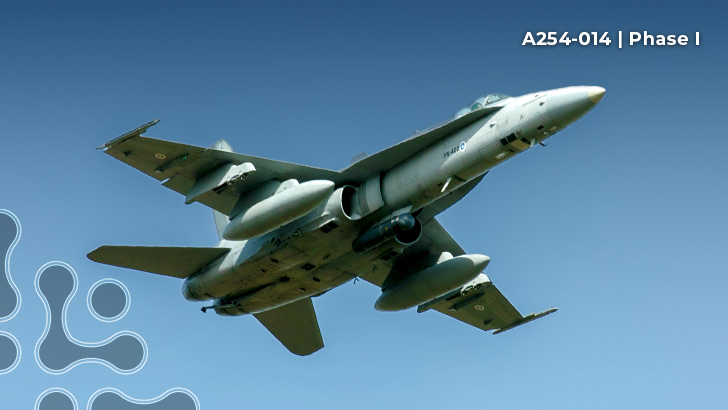

Objective
Development of cognitive decision aiding logic, utilizing machine learning and artificial intelligence constructs, to assist aviators in safely performing tactical flight very close to terrain.
Description
Flying close to terrain and obstacles (i.e. hills, trees, wires, and buildings) is essential for Army Aviation’s survivability against modern anti-aircraft threat systems. Best available aircraft piloting sensors and pilot training can only help to a limited extent because aircrews cannot react to terrain and obstacles they cannot yet perceive.
Today, this capability is limited to what the aviators can see ahead of them (including with sensor assistance) or perceive from a map and hazards overlay. It takes significant resources to train Army Aviators to maneuver helicopters low and fast, but even with the best training they cannot replicate the performance achievable in their local well-understood training area when flying in unfamiliar locations.
In a high threat environment, with improvements to traditional threat systems and the advent of emerging threat systems, tens of feet make a significant survivability difference in threat exposure. Without solving the problem of flying fast and low over unfamiliar terrain, Army combat aircraft may not be able to accomplish their required missions. This challenge extends to the Army’s Uncrewed Aircraft Systems (UAS) which will similarly need to avoid exposures to reduce attritions.
Phase I
This topic is only accepting Phase I proposals for a cost up to $250,000 for a 6-month period of performance.
Phase I will demonstrate the feasibility to capture the required digital twin terrain at the fidelity required for accurate manned helicopter flight near terrain and obstacles, to integrate the digital terrain into a simulation flight model and be prepared to begin terrain flight cognitive machine learning to be accomplished in Phase II.
Phase II
Phase II will develop a prototype Cognitive Terrain Flight Assistance capability, most likely through machine reinforcement learning, that will reduce risk of terrain and obstacle impacts through cognitive understanding of its terrain flight environment and aircraft performance. This terrain flight assistance model must show promise for continued maturation into the MAS 6.3 program.
To accomplish this, the SBIR will demonstrate the improvement of the model first in a simulation environment with pilots flying without and then with the cognitive machine assistance of displaying safe flight paths. If proven in simulation, the terrain flight assistance model will then prove its ability in flight demonstration tests on the actual same terrain in real world conditions. This will most likely be accomplished with uncrewed aircraft controlled by pilots.
Phase III
Submission Information
For more information, and to submit your full proposal package, visit the DSIP Portal.
SBIR|STTR Help Desk: usarmy.sbirsttr@army.mil

References:
Objective
Development of cognitive decision aiding logic, utilizing machine learning and artificial intelligence constructs, to assist aviators in safely performing tactical flight very close to terrain.
Description
Flying close to terrain and obstacles (i.e. hills, trees, wires, and buildings) is essential for Army Aviation’s survivability against modern anti-aircraft threat systems. Best available aircraft piloting sensors and pilot training can only help to a limited extent because aircrews cannot react to terrain and obstacles they cannot yet perceive.
Today, this capability is limited to what the aviators can see ahead of them (including with sensor assistance) or perceive from a map and hazards overlay. It takes significant resources to train Army Aviators to maneuver helicopters low and fast, but even with the best training they cannot replicate the performance achievable in their local well-understood training area when flying in unfamiliar locations.
In a high threat environment, with improvements to traditional threat systems and the advent of emerging threat systems, tens of feet make a significant survivability difference in threat exposure. Without solving the problem of flying fast and low over unfamiliar terrain, Army combat aircraft may not be able to accomplish their required missions. This challenge extends to the Army’s Uncrewed Aircraft Systems (UAS) which will similarly need to avoid exposures to reduce attritions.
Phase I
This topic is only accepting Phase I proposals for a cost up to $250,000 for a 6-month period of performance.
Phase I will demonstrate the feasibility to capture the required digital twin terrain at the fidelity required for accurate manned helicopter flight near terrain and obstacles, to integrate the digital terrain into a simulation flight model and be prepared to begin terrain flight cognitive machine learning to be accomplished in Phase II.
Phase II
Phase II will develop a prototype Cognitive Terrain Flight Assistance capability, most likely through machine reinforcement learning, that will reduce risk of terrain and obstacle impacts through cognitive understanding of its terrain flight environment and aircraft performance. This terrain flight assistance model must show promise for continued maturation into the MAS 6.3 program.
To accomplish this, the SBIR will demonstrate the improvement of the model first in a simulation environment with pilots flying without and then with the cognitive machine assistance of displaying safe flight paths. If proven in simulation, the terrain flight assistance model will then prove its ability in flight demonstration tests on the actual same terrain in real world conditions. This will most likely be accomplished with uncrewed aircraft controlled by pilots.
Phase III
Submission Information
For more information, and to submit your full proposal package, visit the DSIP Portal.
SBIR|STTR Help Desk: usarmy.sbirsttr@army.mil
References:
